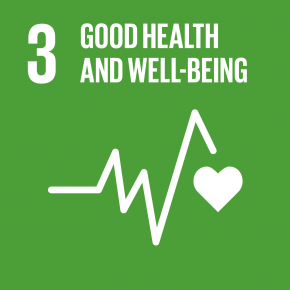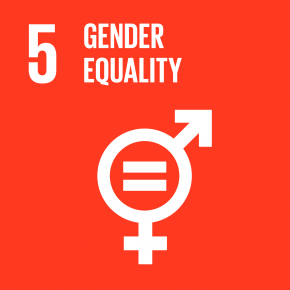|
Researcher Number(JSPS Kakenhi) |
30444912 |
|
|
|
External Career 【 display / non-display 】
-
2006.08
-
2006.08-2013.03
University of the Ryukyus, Faculty of Medicine, University Hospital, Research Associate
-
2013.04-2019.11
-
2013.04-2019.11
-
2019.12
Affiliated academic organizations 【 display / non-display 】
-
Japan society of obstetrics and gynecology
Research Interests 【 display / non-display 】
-
生殖内分泌,不妊症,体外受精・胚移植,腹腔鏡手術,子宮内膜症
-
生殖内分泌
-
子宮内膜症
-
周産期
-
体外受精・胚移植
Research Areas 【 display / non-display 】
-
Life Science / Obstetrics and gynecology
Published Papers 【 display / non-display 】
-
Diffusion lacunae: a novel MR imaging finding on diffusion-weighted imaging for diagnosing placenta accreta spectrum.
Iraha Y, Fujii S, Tsuchiya N, Azama K, Yonamine E, Mekaru K, Kinjo T, Sekine M, Nishie A
Japanese journal of radiology 2024.09 [ Peer Review Accepted ]
Type of publication: Research paper (scientific journal)
-
Access this article
-
Search related information
-
-
Out-of-pocket fertility preservation expenses: data from a Japanese nationwide multicenter survey.
Ono M, Takai Y, Harada M, Horie A, Dai Y, Kikuchi E, Miyachi M, Yamamoto T, Fujii N, Kajiyama H, Manabe A, Yasuoka T, Katsuragi S, Mekaru K, Maezawa T, Horage Y, Kataoka S, Nakayama R, Nakajima TE, Kimura F, Shimizu C, Sugimoto K, Takae S, Yumura Y, Nishi H, Furui T, Morishige KI, Watanabe C, Osuga Y, Suzuki N
International journal of clinical oncology ( International Journal of Clinical Oncology ) 2024.09 [ Peer Review Accepted ]
Type of publication: Research paper (scientific journal)
-
Access this article
-
Search related information
-
-
How Effective Is Cervical Ripening Using the Controlled-Release Dinoprostone Vaginal Delivery System for Primiparas with Unruptured Membranes?
Yoshino Kinjyo* , Yukiko Chinen, Tadatsugu Kinjo, Shuko Chinen, Keiko Mekaru
Open Journal of Obstetrics and Gynecology 2024.08 [ Peer Review Accepted ]
Type of publication: Research paper (scientific journal)
-
Access this article
-
-
Shimabukuro, W; Nakada, S; Shimada, K; Tsukayama, M; Hamada, K; Goya, H; Kinjo, N; Yoshida, T; Mekaru, K; Nakanishi, K
CLINICAL AND EXPERIMENTAL NEPHROLOGY ( Clinical and Experimental Nephrology ) 28 ( 4 ) 293 - 299 2024.04 [ Peer Review Accepted ]
Type of publication: Research paper (scientific journal)
-
Access this article
-
Search related information
-
-
Natsuki Tamashiro, Shuko Chinen, Yoshino Kinjyo, Yukiko Chinen, Tadatsugu Kinjo, Keiko Mekaru
Open Journal of Obstetrics and Gynecology 2024.03 [ Peer Review Accepted ]
Type of publication: Research paper (scientific journal)
-
Access this article
-
Grant-in-Aid for Scientific Research 【 display / non-display 】
-
Effects of polyunsaturated fatty acids on fertilization and embryonic development
Grant-in-Aid for Scientific Research(C)
Project Year: 2016.04 - 2020.03
Investigator(s): Mekaru Keiko
Direct: 3,600,000 (YEN) Overheads: 4,680,000 (YEN) Total: 1,080,000 (YEN)
-
Effects of polyunsaturated fatty acids on fertilization and embryonic development
Grant-in-Aid for Scientific Research(C)
Project Year: 2016.04 - 2020.03
Investigator(s): Mekaru Keiko
Direct: 3,600,000 (YEN) Overheads: 4,680,000 (YEN) Total: 1,080,000 (YEN)
-
Effects of polyunsaturated fatty acids on fertilization and embryonic development
Grant-in-Aid for Scientific Research(C)
Project Year: 2016.04 - 2020.03
Investigator(s): Mekaru Keiko
Direct: 3,600,000 (YEN) Overheads: 4,680,000 (YEN) Total: 1,080,000 (YEN)
-
Effects of polyunsaturated fatty acids on fertilization and embryonic development
Grant-in-Aid for Scientific Research(C)
Project Year: 2016.04 - 2020.03
Investigator(s): Mekaru Keiko
Direct: 3,600,000 (YEN) Overheads: 4,680,000 (YEN) Total: 1,080,000 (YEN)
Social Activity 【 display / non-display 】
-
2023.05




-
2024.07





-
2019.12





-
2019.12


-
2019.12


Media Coverage 【 display / non-display 】
-
産まれるいのちをどう守る?特定妊婦支援 TV or radio program
NHK ハートネットTV 2024.4
Author: Other




